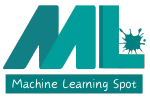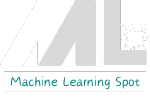Do you know what is LangChain? LangChain, as the name suggests, is a framework that helps you build a connection between your app and a large language model.
Since it is a framework, you can surely work without it, just like you can build a website’s backend using a Python framework like Django Flask, etc., but it becomes a time-consuming and lengthy process.
A framework makes it easier for you to handle things, so langChain is an open-source framework that is meant to save you time building apps that require large language models
LangChain helps you connect your app with LLMs like GPT-4, GPT3.5, Davinci used by ChatGPT, others like Lambda, or any other according to your own choice.
A Simple Explanation of LLMs

Before getting an in-depth understanding what is LangChain, first know about LLMs. A large language model, or LLM, is a machine learning model trained on a large amount of textual data. This large amount of textual data is in terabytes, and it is trained to predict the next word or token that may be required. These LLMs are in raw form, and a developer uses them according to their requirements to make apps like summarization, chatbots, study buddies, or anything else the developer wants; it is up to them to shape it.
Problems that LangChain Solves
After figuring out what is LangChain, now move forward to see what problems this framework can solve. Practically, it solves myriads of problems by bringing ease, but the two major problems that it solves are its generalized nature and AI-hallucinations.
One of the reasons AI hallucinations occur is when LLMs are exposed to data that they were never exposed to, and they start giving false information by filling in information with their imagination.
.webp)
Similar to hallucinations, there is the problem of generalized nature. It gives answers in a more generalized way. AI models are designed to learn from the data they are trained on; ideally, the goal is to train them to work on unseen data, but the pattern they learn from a large amount of data may not always be able to work in every situation, especially when we want more domain-specific output.
With LangChains, we can make custom apps and connect LLM to external resources like your document, your book, or any external API. We can even make a composite function using LLM, i.e., use the output of one LLM as the input of another LLM according to their performance.
Working of LangChain
Now you have some know-how about what is LangChain. Let’s move to figure out its working mode. Since LangChain is a framework that can be used in various ways, so there are various ways to explain how it works. To make it easier, let’s suppose you want LangChain to access your data in a document.
LangChain will first break your document into smaller chunks, convert them into numeric form, i.e., vectors, and store them in a vector store, which is a database for your converted textual data.

A vector is a numerical form of textual data that can be easily processed by a model to know the real meaning of the word. In a dictionary, foot and food might be similar, but here, food and burgers are similar according to context.

Now, when a user gives a prompt, it refers to the vector store and gathers relevant information from your vector database, then combines it with the LLM to give you the most relevant output by doing a similarity search.
Components of LangChain
.webp)
What is LangChain? Its answer is not completed in one definition. You must figure out its components as well, which are:
1. LLM Wrappers
LLM wrappers are used as a bridge or a translator between you and the LLMs. It is where an API is called, and everything related is written like a Human message or user message along with the system message given to the LLM while taking care of every parameter like temperature, etc.
2. Prompt Templates
Prompt templates enable dynamic prompts by injecting user input into predefined text templates. This allows for more personalized interactions with the language model.
3. Vectors and Indexes
LangChain uses indexes to extract relevant information from your data sources. These indexes store vector representations of your data, allowing for efficient similarity searches.
4. Chains
This is what I like the most, as here creativity is taken to another level. Chains combine multiple components to solve specific tasks and build complete language model applications.
This includes chaining together prompt templates, language models, and other components. This part works like a composite function in math—a function within a function.
5. Agents
Again, as the name suggests, these act as intermediaries between AI applications and external services, or APIs. These components enable AI applications to interact with external resources, access additional data sources, and perform various actions based on user requests.
Agents enhance the versatility and functionality of AI applications by facilitating integration with external systems.
LangSmith and LangServe: Powering LangChain

To make development efficient, LangChain also provides several other parts, like LangServe and LangSmith.
LangServe serves as the backbone of the LangChain framework, providing the infrastructure for deploying and managing language model applications.
It offers a scalable and efficient runtime environment for host language model services, handling incoming requests, and taking care of interactions between various components within the framework.

LangSmith helps you see your model and app statistically; it helps you sneak peek into your app to see how well it performs by sneak peeking.
If you want to do AB testing, then Langsmith will help you. You can view any metadata on the system prompts. The user prompts everything. This feature helps you become a watchdog who keeps track of performance.
Now You Know What LangChain Is: Let’s Explore What You Can Create with LangChain
Well, it depends on your creativity, and since you know creativity has no boundaries and has endless possibilities but still to get started and help you get some ideas. Here are a few ideas that I would like to share.
The most famous ones that we can think of are chatbots and virtual assistants, but what’s new here? The new thing is your personalized data or using vertical AI, i.e., data from your industry, to create an intelligent chatbot that couldn’t be created without it—a virtual assistant or chatbot that can read your files and your Excel sheets and can interact directly with your customers as soon as they fill out the forms—an assistant that can help you analyze data on the backend or in any way you want.
Another thing we can think of is a smart storyteller. Based on your children’s or students’ profile data, you can generate more personalized stories that will surely touch their hearts and improve their education process. Wait, why not create your teacher based on your test results uploaded and shared by the system? Yes, it can even do that now.
So why not give your system access to your test results, your favorite YouTube channel’s transcript, and also your school’s course book and the solution to that book, and design a teacher that teaches you how to improve your grades and keeps teaching you different math problems in your famous fictional character’s style while taking tests until you become an expert?
You can even make an app that allows writers to talk to their documents or an app that can help customers talk to the writers and make them feel as if the document is alive and is directly talking to you.
Please don’t forget to share your ideas with us too.
Prerequisites to Really Understand What Is LangChain
So if you are an absolute beginner, you must be thinking about the prerequisites for LangChain. To deeply understand what is LangChain, you need to understand Python. You need to have programming knowledge of Python; otherwise, you can’t work on it effectively Yes, LangChain is available in JavaScript too, but most of the other machine learning libraries, like Numpy and Pandas, are available in Python, so you need to learn Python.
Some basic ideas and understanding of NLP (natural Natural Language Processing) to understand concepts like vectorization, tokenization, stemming, parsing, sentiment analysis, and other basic concepts will also be crucial, as LangChain heavily revolves around tasks like text processing, language understanding, and generation.
Knowledge and understanding of LLM (Large Language Models) knowledge of LLM is as essential as having a brain to articulate our limbs since LLM works like a main processing brain, so the better knowledge about LLM, the better app you will be able to develop using LangChain. Since LangChain has to work in coordination with an LLM to connect it to external data.
Now I hope you must have understood what is LangChain and now you even have an idea of how you can make yourself a hero from zero, but LangChain keeps updating itself according to the needs of the future. We can expect new tools, components, and features from this framework to stay updated. Keep following our blog posts. Tell us what feature you liked the most, and if you have any further queries or suggestions, feel free to contact us.


